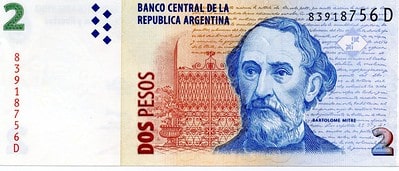New Scholarship on the Argentinian Sovereign Debt Litigation
July 28, 2022

For more than a decade in the early 00s, Argentina’s $100 billion sovereign debt default dominated the transnational litigation news headlines – and, indeed, global financial news. Hundreds of cases were filed against Argentina in U.S. courts with long-term implications for foreign sovereign immunity and foreign direct investment. Many of those cases were consolidated before Judge Griesa in the Southern District , who held that under the language of the sovereign bonds (in particular the pari passu clause) on which it had defaulted, Argentina could not favor creditors who had accepted a restructured deal over “hold out” creditors who had not accepted restructuring. That decision forced Argentina to settle in 2016.
A fascinating new paper up on SSRN takes us back to those cases but examines them from a new perspective. Mark C. Weidemaier and Gregory Makoff have posted Mass Sovereign Debt Litigation: A Computer-Assisted Analysis of the Argentina Bond Litigation in the U.S. Federal Courts 2002–2016, forthcoming in the UC Davis Law Review. The paper uses computer analytics to analyze the Argentina cases, with particular attention to the lawyers involved, the role of litigation finance, and the significance of specific procedural devices such as class actions and multi district litigation. The paper drives home the point that transnational litigation is at once its own field with its own challenges and its own doctrines, but it is also very much a part of complex litigation generally in the United States.
Here is the abstract:
This article presents a computer-assisted analysis of the first large-scale mass litigation of sovereign debt claims. Between 2002 and 2016, hundreds of lawsuits were filed against Argentina in the United States, virtually all in the Southern District of New York. Historically, litigation against a foreign government would have involved a few hedge funds that had invested in debt at distressed prices. Argentina faced thousands of investors, including small retail bondholders, in litigation that more closely resembled a mass tort or federal multidistrict litigation than any prior episode involving a sovereign’s debt default.
This article combines traditional analysis of court records with computer-assisted analysis of dockets and hearing transcripts using machine learning techniques. It provides a comprehensive account of the Argentina bond litigation, demonstrating that a wide range of investment funds and even retail investors can finance and aggressively pursue litigation against a foreign state. The article develops metrics to measure the intensity of litigation, shows that a relative handful of cases and litigants generated disproportionate activity, and reveals patterns in how groups of plaintiffs competed and coordinated. The findings suggest that, despite recent reforms designed to reduce litigation, sovereign debt litigation is here to stay.